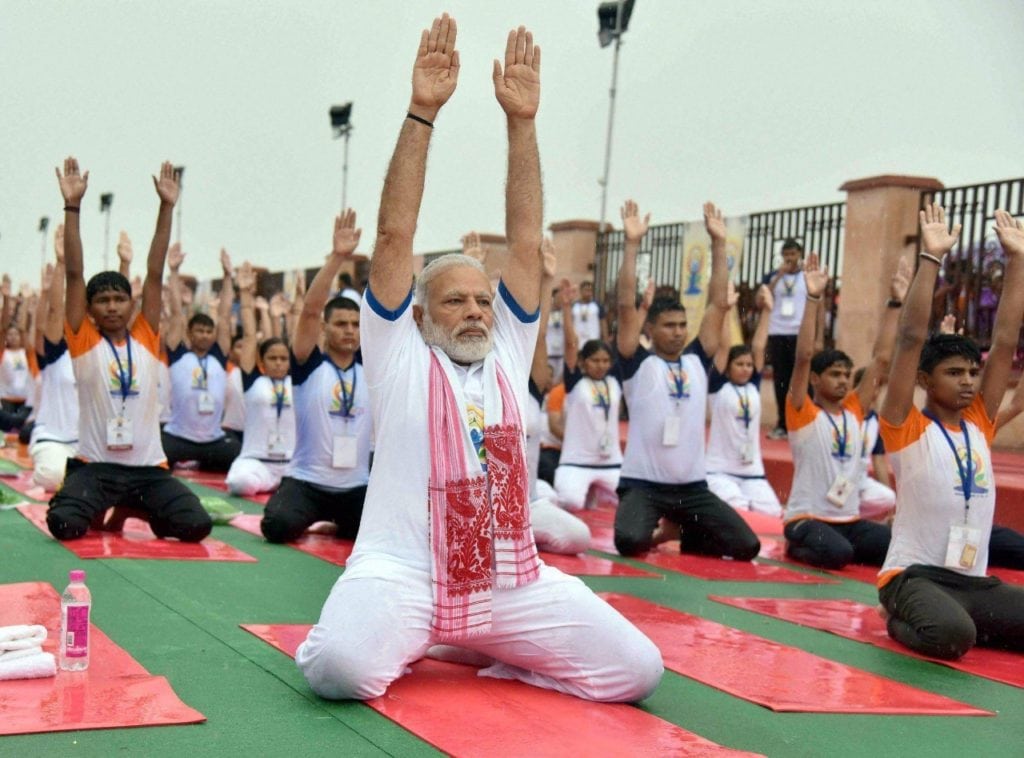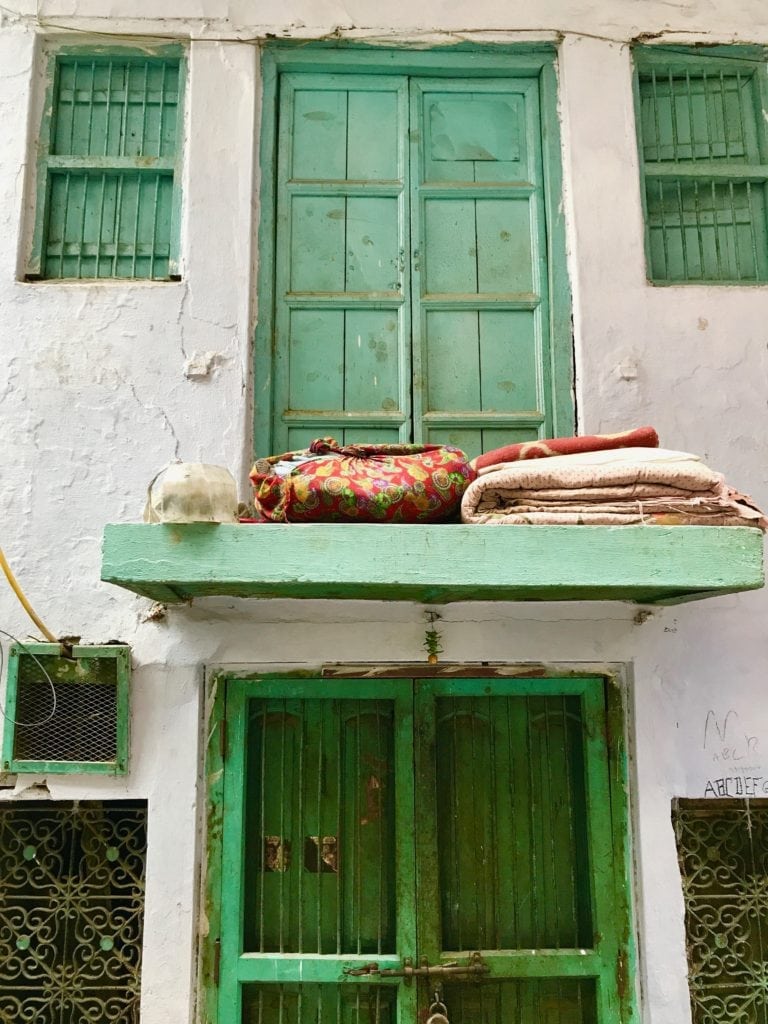India's Yoga Culture: Deeper than a Wellness Travel Trend
 Prime Minister Modi practicing yoga and leading his nation by example. Photo Credit: Doordarshan.
Prime Minister Modi practicing yoga and leading his nation by example. Photo Credit: Doordarshan.
Wellness: The Trend
The rise of wellness travel has given new meaning to “vacation time” as a way to restore, detox, and rebalance. Many are ditching the all-inclusive beach for meditation and yoga retreats, or finding a way to bring their asana to the sand through yoga and surfing trips. Especially in the United States, where the average is two weeks vacation a year, being able to recharge in a meaningful way is essential. Resorts like The Ranch, philanthropic retreats like Soujourn Yoga, and ashrams around the world provide wellness experiences to facilitate that spiritual, mental, and physical connection.
Millennials are a driving factor behind the rise in wellness travel. They prefer to spend money on experiences versus material things. But it’s not just Millennials who want authentic travel. The prospect of using the time off for personal growth, and not just relaxation, has universal appeal. Many wellness resorts offer R&R, but also provide holistic diets and nutrition planning for clients with underlying health issues. Those of us who find ourselves taking frequent trips to the doctor or spending days under the weather might just need a prescription of yoga, clean eating, nature, and meditation.
 Architecture in Delhi. Photo Credit: Misty Foster.
Architecture in Delhi. Photo Credit: Misty Foster.
Wellness in India
What better place to take a journey of transformation than India? Traveling to India has long been a favorite destination for those seeking profound change. India looms large in the world’s imagination, signaling the opportunity for magic, renewal and a connection with deeply felt truths. Consider in E.M. Forster’s Passage to India, the Beatles’ trip to Rishikesh, and Elizabeth Gilbert’s sojourn in Eat, Pray, Love… many feel the mystic’s tug toward the subcontinent. India is, after all, the birthplace of yoga. While the yoga most Westerners practice today is more akin to Swedish gymnastics, it’s an integral part of why people travel to India. A chance to study yoga with the Gurus or to join a Vipassana retreat is a bucket list experience for many travelers dreaming of a wellness journey.
Today, India’s aim is to take yoga and wellness travel to the next level through integrating scientific research, world-class holistic resort and treatment centers, and a rich history of spiritual and embodied wisdom. One such integration is the celebration and promotion of International Day of Yoga. In 2014 India’s Prime Minister Narendra Modi addressed the United Nations and suggested June 21st as the official day to celebrate the ancient tradition. In his speech, he stated that “Yoga is an invaluable gift of India’s ancient tradition. It embodies the unity of mind and body; thought and action; restraint and fulfillment; harmony between man and nature; a holistic approach to health and well-being. It is not about exercise but to discover the sense of oneness with yourself, the world and nature.” Today the day is celebrated by 175 nations. This year, thousands of participants joined Prime Minister Modi (in the rain: June 21st will tend to arrive during the Monsoon) to practice yoga and to learn more about its cultural importance. Modi spoke of how yoga has been adopted by many institutes and school curriculums throughout India’s state departments, and that many are starting to accept yoga as a career option. This can be seen across many of the country’s universities and is especially relevant at the Vivekananda Yoga Anusadhana Samsthana (VYASA).
VYASA is one of the only yoga-based universities in the world. This is a research-based institute, whose primary focus is to expand on the social and scientific relevance of yoga. VYASA is pioneering technologies like the use of transcranial doppler sonography to measure brain activity during meditative states. They are also spearheading research into the physiological effects of Yoga practice, the uses of Yoga for rehabilitation, and the scientific investigation of higher states of consciousness. Attached to the research facilities is a hospital where patients come for ayurvedic healing and to adopt a yoga lifestyle.
 Inside Soukya, one of India’s international holistic centers. Photo Credit: Misty Foster.
Inside Soukya, one of India’s international holistic centers. Photo Credit: Misty Foster.
Wellness as a Destination
While attending the VYASA facility is a great option for those looking for wellness, there are other resorts that curate a more luxurious experience.
Soukya. Helmed by world-renowned Dr. Mathai, Soukya is an international holistic center ideal for those who want to delve into ancient medical techniques and therapies in a pristine environment. Situated on the outskirts of Bangalore, the resort offers homeopathic, naturopathic, and Ayurvedic treatments. Upon arrival, you are given an assessment and begin receiving treatments based on your Ayurvedic Dosha and other factors. Guests are encouraged to stay for up to three months or more to experience the full effect of the treatments, and daily yoga and meditation are included in the cost of your stay. The resort is known for welcoming a wide range of guests. It is a destination for many with serious health concerns and addictions, but it also draws the likes of Camilla, Duchess of Cornwall and amongst other famous guests. It’s easy to see why, with Soukya’s lush gardens occupied by hundreds of butterflies. The grounds are stunning and there is ample opportunity to immerse yourself in nature. The mind, body, and spirit are rejuvenated after even a few hours spent at the center.
Health and wellness are projected to be the next trillion dollar industry. By positioning themselves as leaders in yoga and holistic healing, India is on track to set the tone for this next era of tourism.
